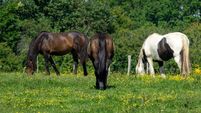Gulf widens between dairy and cattle farming
The latest annual Teagasc National Farm Survey has confirmed the profitability achieved by dairy farms in recent years. However, it has confirmed a growing gulf between profitable dairy and struggling cattle and sheep farms. Tillage incomes were steady year on year.
The survey showed dairy incomes rising from their 2013 figure of a little over €64,000. Farmer groups note this rise is largely due to increased output, while product prices are falling.










